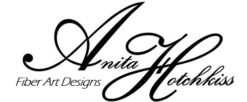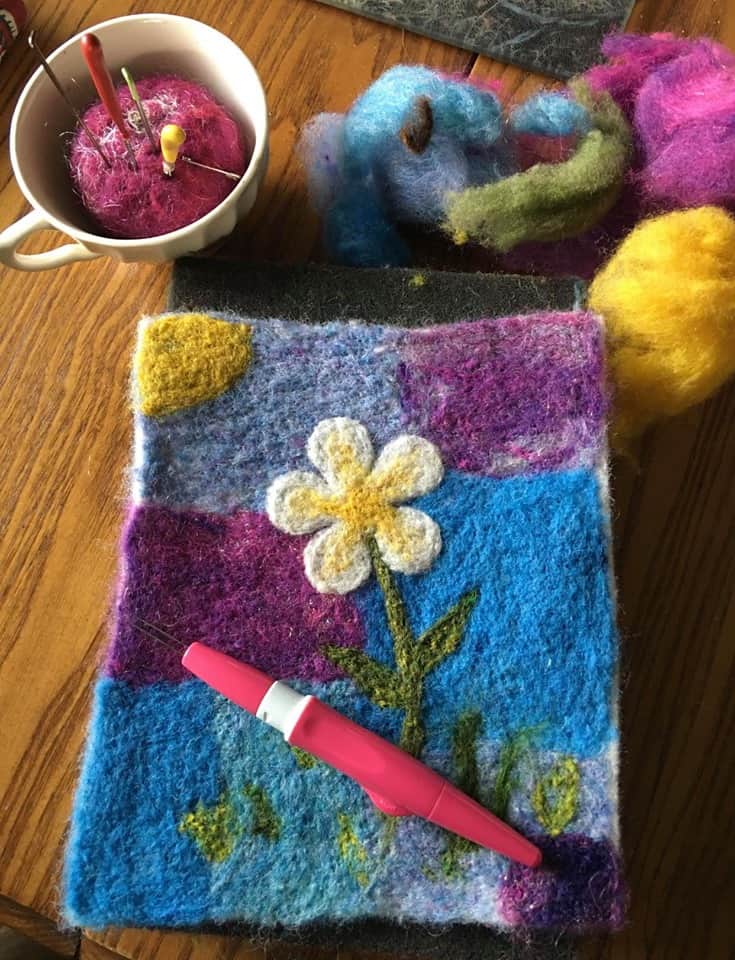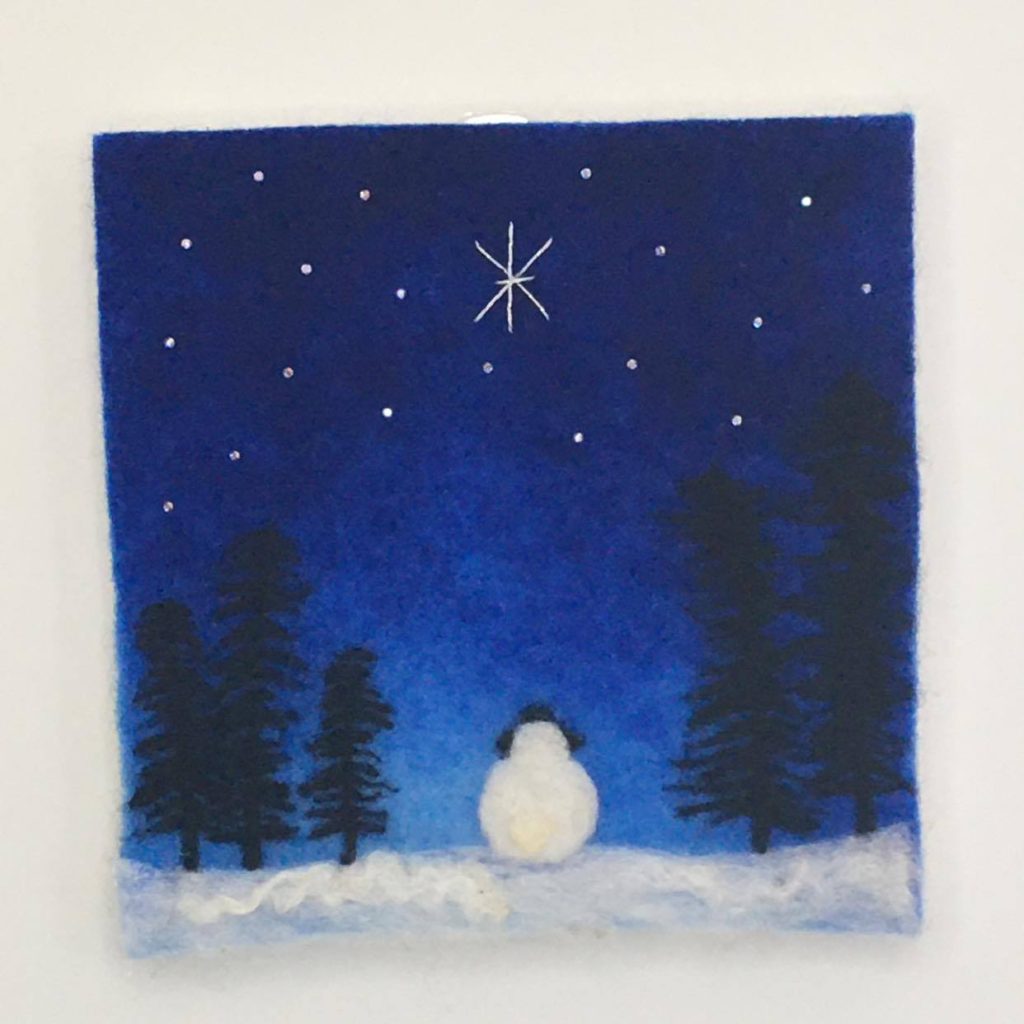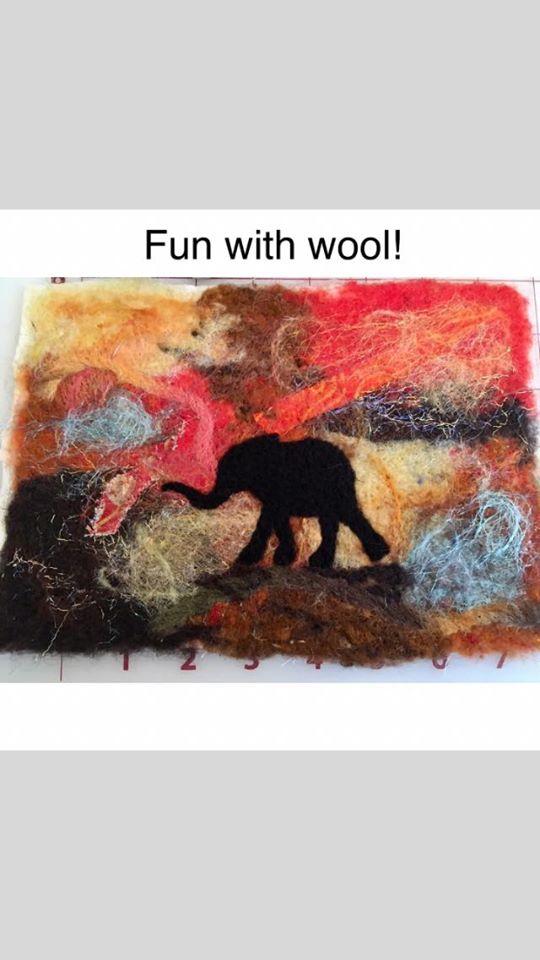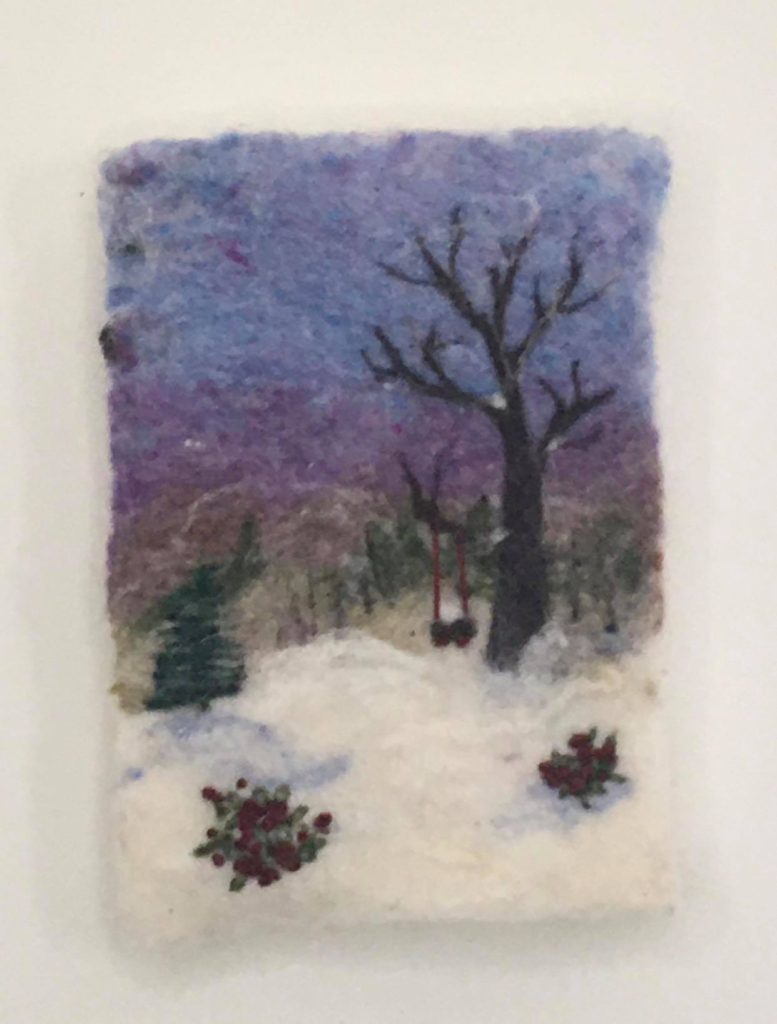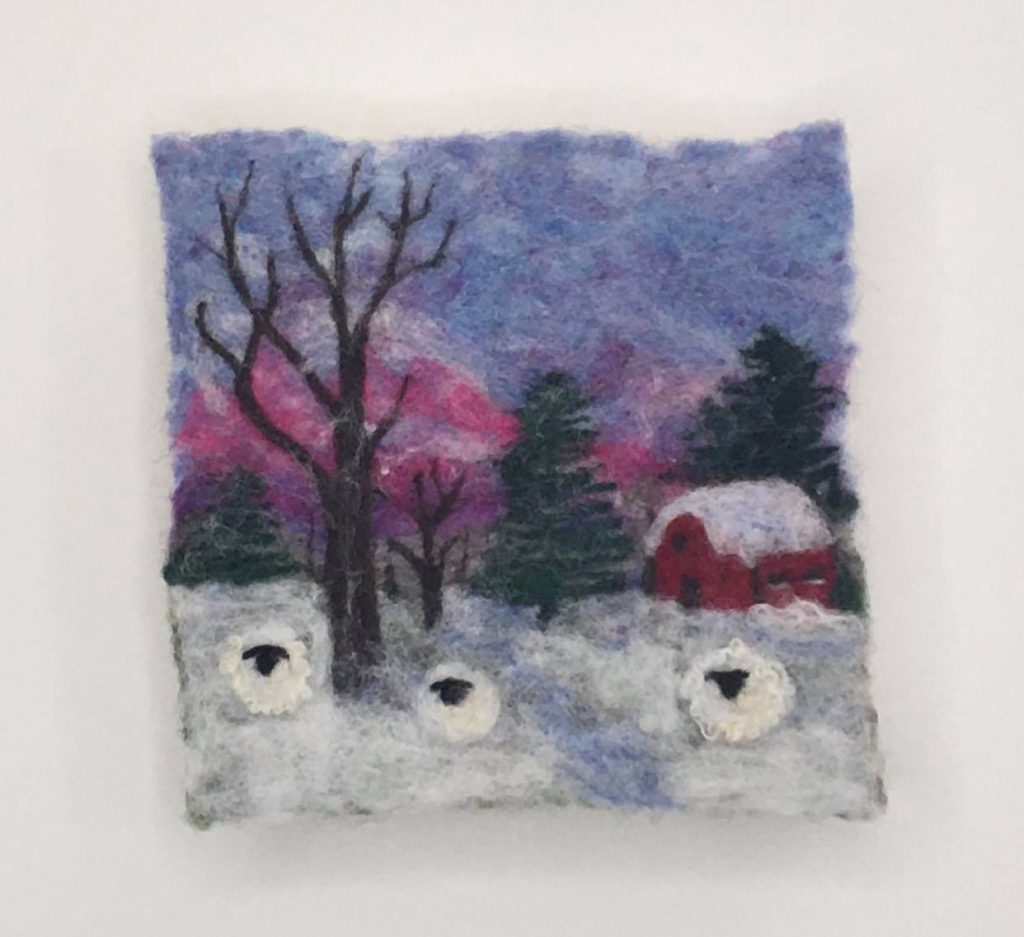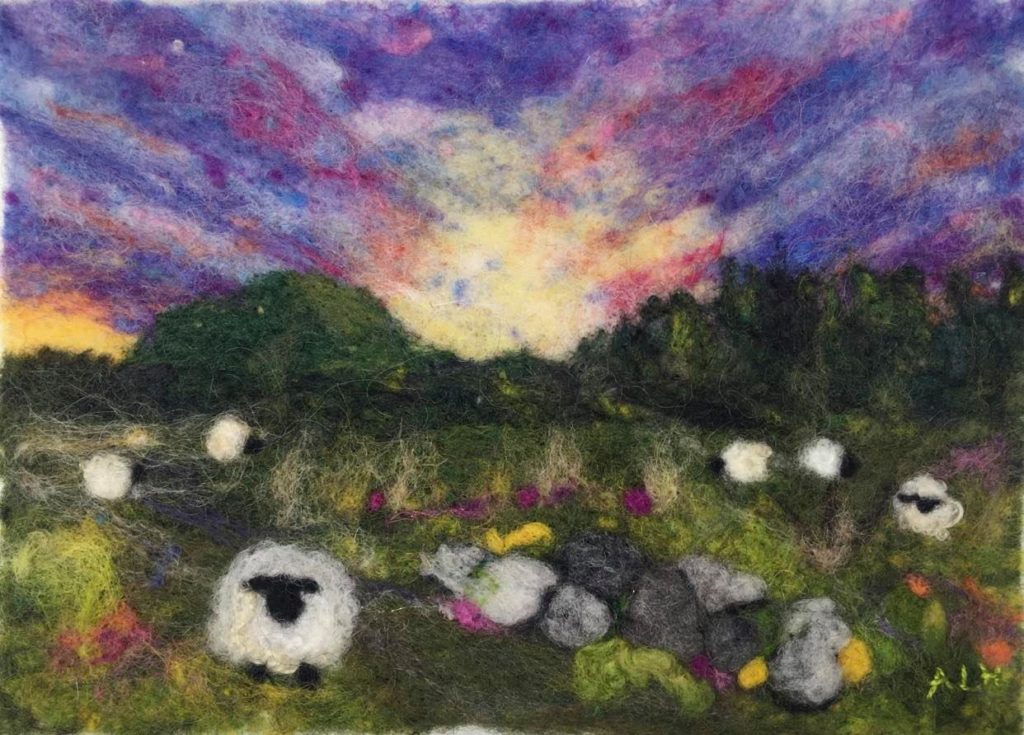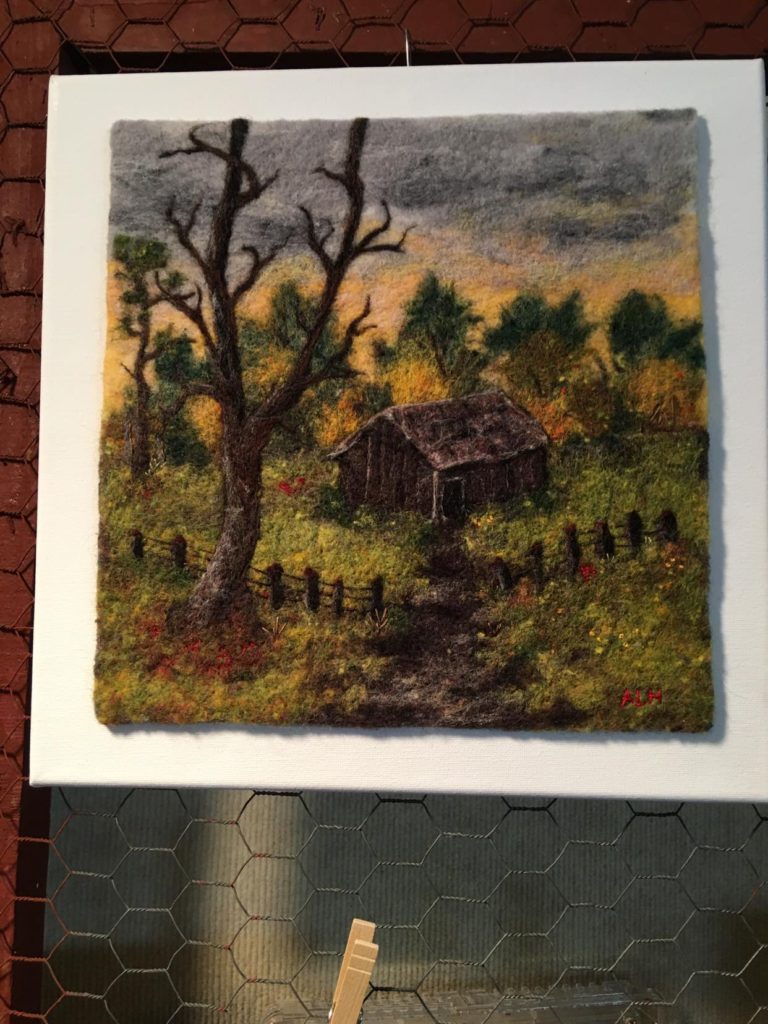
When people see my art pictures they are surprised to find out that my landscapes are needle felted wool! Some have to actual touch the picture to believe me. I don’t mind if they touch the picture, wool is very resistant to dirt and dust. At this point they are very curious and ask what needle felting is and how do I make the pictures.
Felt History
The history of wet felting is well documented. Felt from wool is one of the oldest textiles there is. It is a type of of textile that is not woven but produced by matting, condensing and pressing fibers together. Combine water and the pressing of the fibers together and eventually you will have a solid piece of textile. There are many stories about how and where feltmaking began. Today Nomadic peoples still practice feltmaking and make rugs, tents and clothing out of felt for everyday use and for selling to tourists.
Needle felting Origin–Industrial use
Needle felting is the technique of making felt without the water. The felt textile is made by stabbing the wool with a special barbed needle. As the needle goes in and out of the fibers they tangle up and eventually mat together into a solid mass. Needle felting was invented in the 1800’s with the first patent for a needlepunch machine given in 1859. Fiber was stabbed with thousands of needles to create batting and insulation from shredded wool garments. The final product was used for many things such as underlay for carpets, gaskets, dust barriers and latterly for the automobile industry producing carpets for cars.
Needle felting–Individual use
In the 1980’s Eleanor and David Stanwood had moved from Sonoma County, California to Martha’s Vineyard where they worked with felt makers from Belgium. Eleanor and David wanted to make a light batting for quality quilts and comforters. Eleanor brought home some felting needles from one of the mills and began to use the needles to make felt on a small scale. She developed a new method of using just a few needles to produce scarves and wraps.
Eventually these new felting needles came to the attention of the Californian textile artist Ayala Tapai. Through Ayala the process came to the attention of Danish felt artist Birgitte Krag Hansent. Felting with one or so needles soon caught on and spread across Scandinavia. This smaller scale of felting was very appealing because it was a dry style of felting and did not involve using water. It soon spread to other areas of the world.
Needle felting and my landscapes
My relationship with needle felting started quite by accident. In the 1990’s a friend introduced me to these needles when I was at her house learning how to spin wool. I quickly took to this style of felting. Wet felting is very hard on my shoulders and back. I physically can not do it without a lot of pain.
I started small with some snowmen and felted round ornaments. Eventually I moved up to pumpkins and gnomes. Supplies were becoming more readily available and the internet opened up so many possibilities. Leaders in the felting industry began to offer free tutorials over the internet. Soon I was watching everything and trying out different techniques.
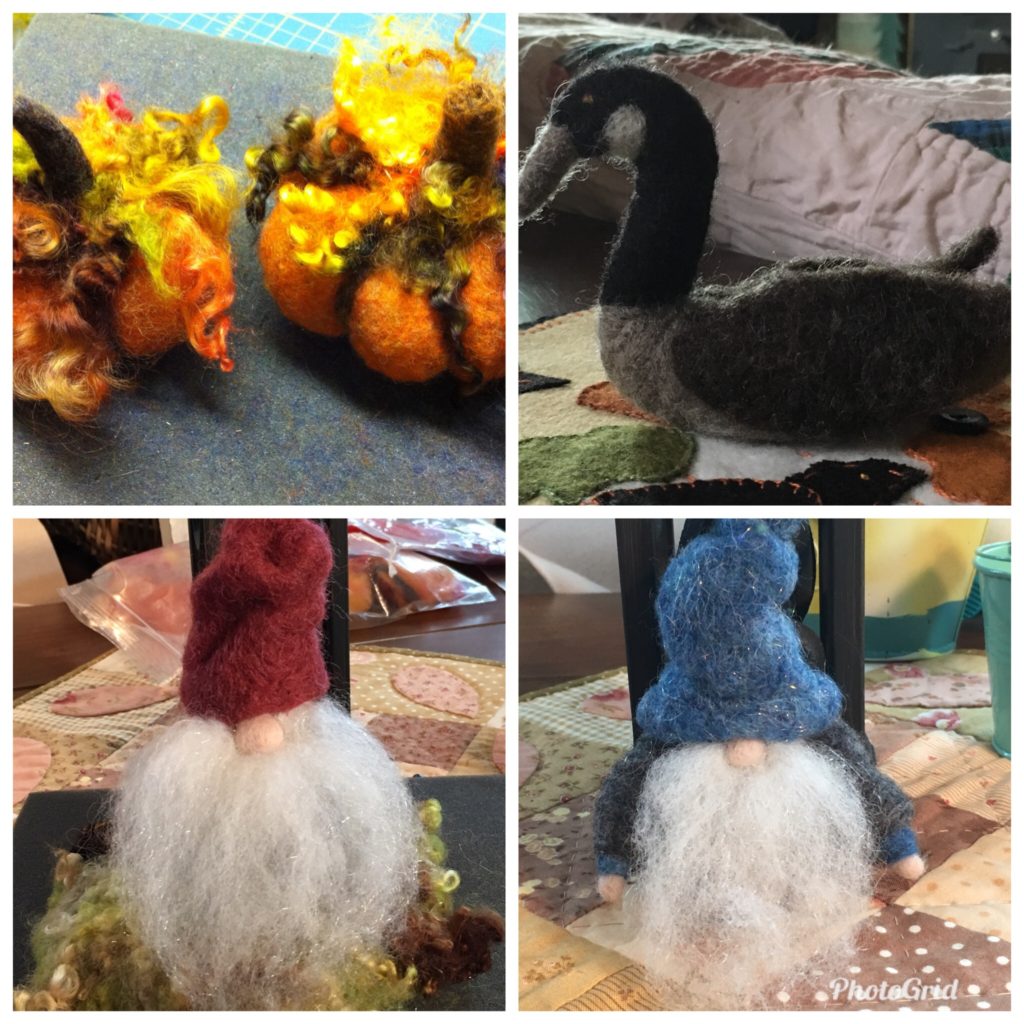
Needle felted Landscapes
Eventually I found my way to trying some 2D pictures. I felt I was better at making flat art rather then 3 dimensional art. I started by using cookie cutters and paper templates as my molds for the pictures.
The more I learned the more I was able to expand my horizons.
New teachers, new techniques
My Inspirations today
In March I was recovering from surgery. I became acquainted with the work of painter Bob Ross. I knew of him but had never really studied his art form. I was mesmerized! I was certain I could do it but I wanted to try painting in wool fibers. I studied hours and hours of his work! Here are a few of my most recent wool pictures.
If you would like to read more of my Fibery Tales go here!!
If you have been inspired and would like one of my Wool Paintings, see them in my Etsy Store
Join my Facebook Group to learn when pictures become available and other store sales.
